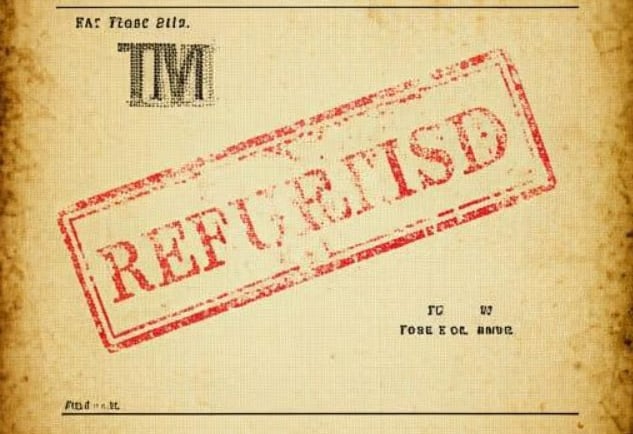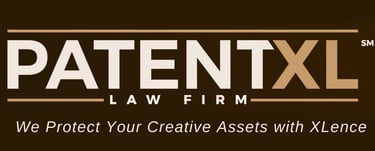AN OVERVIEW OF TRADEMARK REGISTRATION AND CLASSIFICATION


What is a Trademark?
A trademark is a distinctive word, phrase, symbol, or design that identifies and differentiates the source of goods or services from those of others. Registering a trademark provides legal protection against unauthorized use, helping businesses maintain brand identity and customer trust. The United States Patent and Trademark Office (“USPTO”) manages the registration process and ensures trademarks are properly classified.
Goods and Services in Trademark Applications
Goods are tangible products sold to customers, such as computers, candy, or diapers, while services are activities performed for the benefit of others, like work performed by law firms, banks, or travel agencies. When filing a trademark application, businesses may list goods and/or services, so long as the mark is used on or in connection with those products or services, but they must be clearly and accurately identified.
A trademark owner may apply for trademark registration based on "use in commerce," meaning that at time of filing a trademark application the mark is already being used for all listed goods and services. Alternatively, the trademark owner may file based on a "bona fide intent to use," meaning that the applicant must have a genuine intention to use the mark in commerce, in connection with all specified goods and services.
Using vague terms in the description of goods and services, such as the phrase "miscellaneous services" can result in a rejected application. But broad terms may be OK. For example, a person selling black short-sleeved t-shirts could list them more broadly as "t-shirts," "shirts," or "tops as clothing," all of which are acceptable. Applicants can search the USPTO's ID Manual (https://idm-tmng.uspto.gov/id-master-list-public.html) for pre-approved descriptions or create their own for an additional fee.
The Role of Trademark Classes
Trademark classes organize goods and services into 45 distinct categories, simplifying registration and reducing the risk of infringement. These classifications, which are international in nature, ensure trademarks are protected only within the specified categories.
It is important to note that two different people/businesses may own the same mark for their respective businesses, without creating a conflict. For example, "Delta" exists as a trademark for both faucets and airlines - and are owned by two different businesses - because they belong to different classes. Similarly, "Pandora" is used for both jewelry and music streaming without conflict. It follows, therefore, that a trademark registered under one class does not necessarily prevent another company from registering the same trademark under an unrelated class. Although sometimes the opposite occurs if the USPTO asserts that an existing registered trademark in a different class nevertheless conflicts with the mark sought to be registered because the products or services are somewhat related, even if in two different classes.
Many trademarks span multiple classes. For example, if a company manufactures trumpets and also sells branded t-shirts under the same mark, it would need to file under musical instruments and clothing classes to secure full protection.
Trademark Classes Explained
The USPTO follows the Nice Classification system, which standardizes categories across participating countries. There are 34 classes for goods and 11 for services, as listed below:
Classes of Goods
Chemicals
Paints
Cosmetics and Cleaning Preparations
Lubricants and Fuels
Pharmaceuticals
Metal Goods
Machinery
Hand Tools
Electrical and Scientific Apparatus
Medical Apparatus
Environmental Control Apparatus
Vehicles
Firearms
Jewelry
Musical Instruments
Paper Goods and Printed Matter
Rubber Goods
Leather Goods
Nonmetallic Building Materials
Furniture and Articles Not Otherwise Classified
Housewares and Glass
Cordage and Fibers
Yarns and Threads
Fabrics
Clothing
Fancy Goods
Floor Coverings
Toys and Sporting Goods
Meats and Processed Foods
Staple Foods
Natural Agricultural Products
Light Beverages
Wine and Spirits
Smokers’ Articles
Classes of Services
Advertising and Business
Insurance and Financial
Building Construction and Repair
Telecommunications
Transportation and Storage
Treatment of Materials
Education and Entertainment
Computer and Scientific
Hotels and Restaurants
Medical, Beauty & Agricultural
Personal Services
Trademark Search and Application Process
Before applying for a trademark, and in fact before starting to use a trademark, conducting a search is essential to avoid conflicts. The USPTO's Trademark Electronic Search System (TESS) allows applicants to filter searches by class to identify potential conflicts, but it is not by any means the best option, and it has limitations as to the types of marks that can be searched (i.e., the graphical elements of design/logo marks are not easy to search).
There are professional searching software and services that methodically search federal and state databases, as well as the internet and often other sources, to determine the likelihood of conflict with an existing mark, including marks being used that may not be registered. A competent trademark attorney is then able to review the results of the search and determine the likelihood that a particular trademark may succeed at obtaining registration, and also whether use of a particular mark – whether or not it is registered – may represents a risk of infringement of an existing trademark registration. In cases in which a risk of infringement is encountered, the business may ask the attorney to conduct a freedom to operate investigation and issue a legal opinion in that regard. For reasons that extend beyond the scope of this article, it is always preferable to avoid the inconvenience and cost of trademark litigation.
Trademark Filing Fees
As of January 2025, the USPTO has updated its trademark application process, eliminating the TEAS Plus and TEAS Standard filing options. In addition, the USPTO changed some of its fee structure for trademarks. The new standard filing fee structure is as follows:
Online Application Fee: $350 per class
Paper Application Fee: $850 per class
These fees apply to each class selected. For example, if a business files for "clothing" and "musical instruments," the total online filing fee would be $700.
The Trademark ID Manual
The USPTO maintains the Trademark ID Manual, a listing of acceptable identifications for goods and services. Updated weekly, it simplifies application preparation and reduces the likelihood of rejection. If no suitable category exists, applicants can propose a new description, but this requires an additional fee ($200 per class) and approval by an examining attorney.
International Trademark Classification
While the Nice Classification standardizes trademark classes globally, not all countries follow the same system. When filing internationally, businesses should research trademark laws in each jurisdiction to ensure proper classification and protection.
Frequently Asked Questions
How many trademark classes are there? There are 45 classes in total—34 for goods and 11 for services.
How do I determine the right trademark class? Use the USPTO's Trademark ID Manual or consult an intellectual property professional to ensure accurate classification.
What are the current USPTO filing fees? As of January 2025, the USPTO charges $350 per class for online applications and $850 per class for paper applications.
How does international registration affect classification? The Nice Classification system applies in most countries, but variations exist. Research each country’s requirements before filing internationally.
Why are trademark classes important? Trademark classes define the scope of protection. Registering under the correct classes bolsters brand security and prevents infringement.
Conclusion
Trademark registration should be considered a priority in protecting a brand's identity. Understanding goods and services classification, trademark classes, and application fees helps businesses make informed decisions and maximize legal protection. By using available resources like TESS, and the ID Manual, applicants can streamline the filing process and safeguard their intellectual property effectively, although it is always advisable to consult with a trademark professional to correctly and effectively carry out the application, prosecution, and ultimately enforcement of the trademark. More information may be obtained in another article I wrote explaining some of the basic concepts associated with trademarks.
For additional guidance on trademark classification, filing, prosecution, and enforcement, contact the PatentXL Law Firm, a trusted expert in intellectual property law at info@patentxl.com. The firm’s team can provide professional assistance in all aspects of protection of your trademark.


